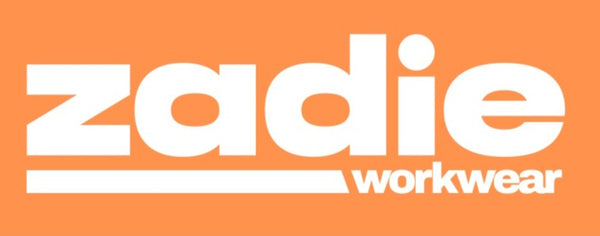
The History of Women’s Workwear in Australia
Share
Earlier, women in Australia often had to wear clothes which were designed for men while working on farms, in factories, and on construction sites. These workwear were uncomfortable, restrictive, and unsafe for women working on tough jobs. Despite these challenges, women continued to work, showing both skills and determination. Their efforts created the need for workwear that was practical, protective and designed specifically for women.
Over time, workwear for women in Australia changed completely. Designers began creating clothing built for women’s bodies, focusing on safety, comfort, and durability. This change reflected improvements in industry practices and showed how women were becoming more recognized and influential in skilled trades. Let’s uncover how this remarkable evolution unfolded through the history of women’s workwear in Australia.
Early Beginnings: Women Entering the Workforce
During the 19th century, more women in Australia joined the paid workforce, driven by the need to support their families and the new opportunities created by industrialization. Many worked in factories, domestic services, and home-based jobs like sewing or laundry.
In 1857, about two-thirds of working women were employed as domestic servants, meaning most women who earned wages worked in other people’s homes. By 1901, this number had dropped to 50%, as more women found jobs in factories, shops, and other trades. By 1945, only about 18% of working women were domestic servants, showing how women’s roles in the workforce had diversified.
Women continued to manage household responsibilities while contributing financially. Much of their work, especially home-based or irregular jobs, was not recorded in official statistics, so their efforts were often overlooked. This period set the stage for the later development of workwear designed specifically for women in trades.
How Women’s Workwear Evolved in Australia?
1. From Men's-Only to Specialized Design
In the past, women working in trades wore standard male workwear that often fit poorly and caused discomfort. The clothes were not designed for women’s bodies, which sometimes affected safety and performance. Today, specialized women’s workwear offers better fits and designs, showing how the history of women’s workwear in Australia has moved toward purpose-built clothing.
2. Focus on Safety and Performance
Early workwear lacked proper protective equipment for women, creating safety risks on job sites. Loose or ill-fitting clothing could get caught in machinery and slow down work. Modern workwear now includes reinforced panels and safety-focused designs, reflecting the ongoing evolution in the history of women’s workwear in Australia.
3. Emphasis on Comfort and Functionality
Traditional workwear was often uncomfortable, heavy, and restrictive, making long hours more difficult. Today, fabrics like breathable textiles, stretchy blends, and pre-washed cotton are common. This focus on comfort shows how women’s workwear in Australia has developed to meet practical needs in trades.
4. Rise of Style and Professional Image
Ill-fitting clothing in the past could undermine confidence and professional credibility for women in trades. Modern workwear now combines style and function, helping women feel confident and look professional. The evolution of design in the history of women’s workwear in Australia ensures that tradeswomen are now respected and valued.
5. Inclusive Size Ranges
Earlier workwear offered only limited sizes, leaving many women without properly fitting options. Modern brands now provide a wide range of sizes and inclusive designs to suit all body types. This improvement highlights the industry’s commitment to diversity and practicality in women’s workwear.
6. Adaptation to Australian Climate
Earlier workwear was not designed for Australia’s heat or harsh weather, so women often had to work outdoors without proper protection. Modern clothing now includes breathable fabrics, UPF protection, and durable materials. This evolution ensures women can work safely, comfortably, and effectively in any environment.
Zadie Workwear: The Modern Era of Women’s Workwear
1. Purpose-Built for Women
Zadie Workwear creates garments specifically designed for women in trades, offering better fit and functionality than traditional male workwear. This focus shows the continued progress in the history of women’s workwear in Australia.
2. Emphasis on Safety
Zadie designs incorporate reinforced panels and durable materials that protect women on job sites. Safety features are tailored to women’s needs, reflecting modern standards in workwear.
3. Comfort and Flexibility
Their clothing uses breathable fabrics, stretch materials, and practical cuts for long hours of work. Comfort and ease of movement are a priority in Zadie’s designs.
4. Stylish and Professional
Zadie Workwear combines functionality with style, helping women feel confident and professional on-site. This approach highlights how modern women’s workwear supports both image and performance.
5. Inclusive Sizing
Zadie provides workwear in a wide range of sizes to suit different body shapes. This focus on inclusivity ensures that every tradeswoman can find clothing that fits properly, feels comfortable, and supports safety and performance on the job.
Shaping the Future of Women’s Workwear in Australia
The evolution of women’s workwear in Australia reflects the determination, skill, and growing presence of women in trades. Brands like Zadie Workwear are leading the way by offering safe, comfortable, and stylish garments that meet the unique needs of tradeswomen. As the industry continues to adapt, women now have access to workwear that supports performance, confidence, and equality on every job site.
Shop with Zadie Workwear today to experience clothing designed for comfort, safety, and style, empowering women in trades across Australia.
